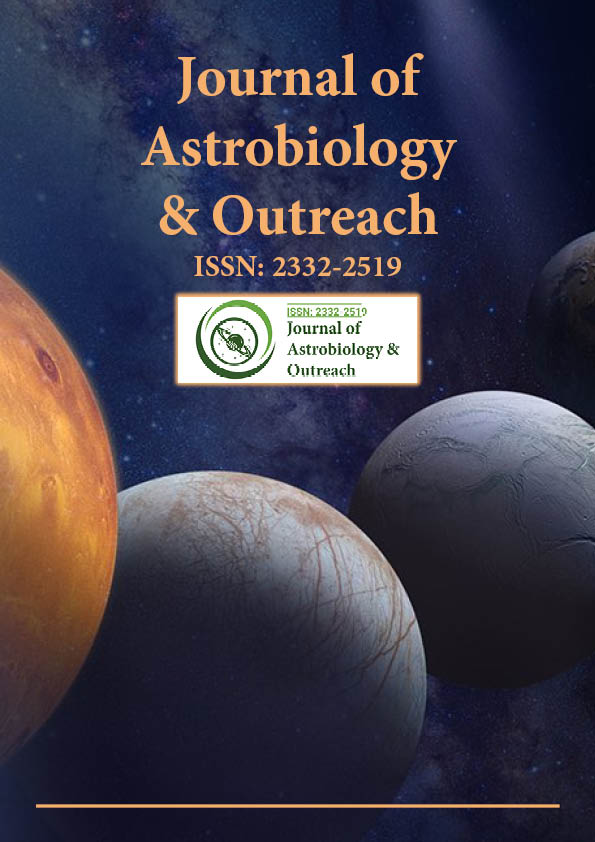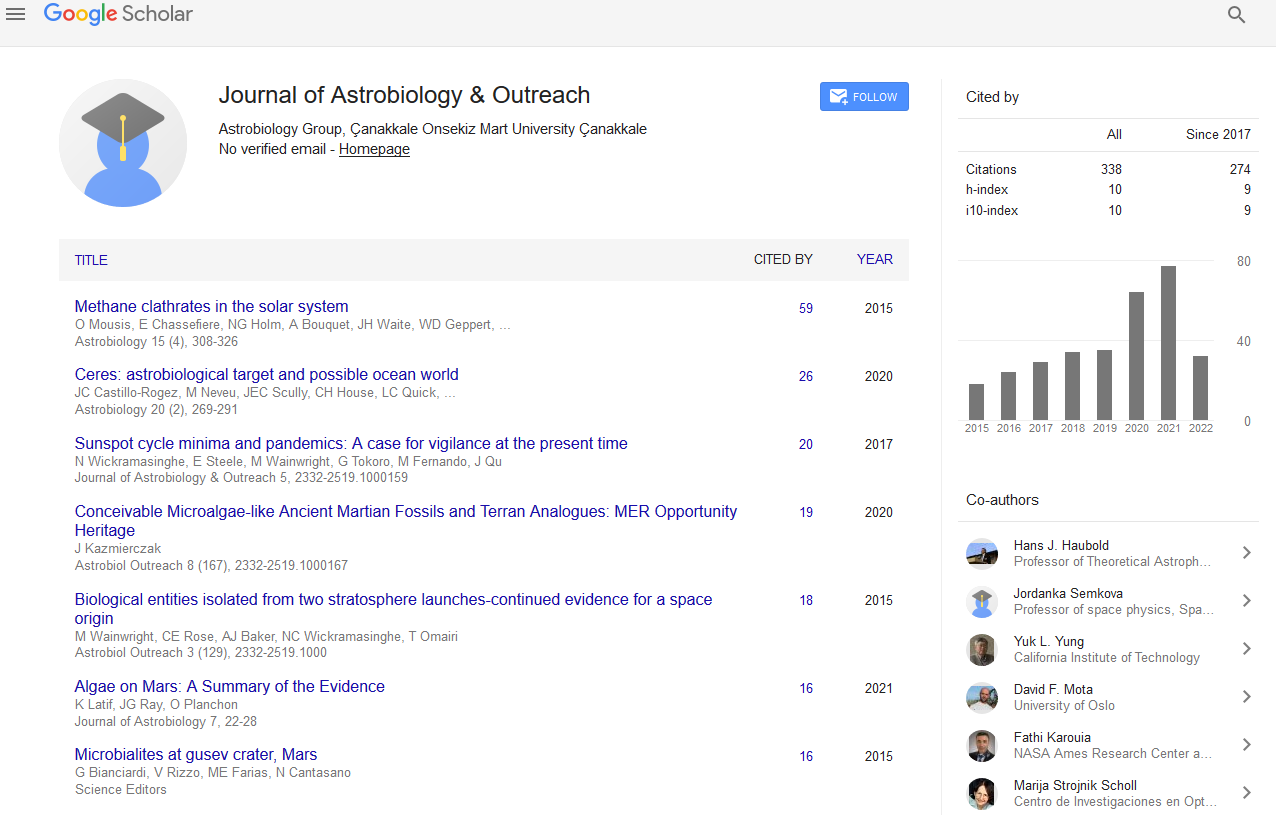Indexed In
- Open J Gate
- Academic Keys
- JournalTOCs
- RefSeek
- Hamdard University
- EBSCO A-Z
- OCLC- WorldCat
- Google Scholar
Useful Links
Share This Page
Journal Flyer

Open Access Journals
- Agri and Aquaculture
- Biochemistry
- Bioinformatics & Systems Biology
- Business & Management
- Chemistry
- Clinical Sciences
- Engineering
- Food & Nutrition
- General Science
- Genetics & Molecular Biology
- Immunology & Microbiology
- Medical Sciences
- Neuroscience & Psychology
- Nursing & Health Care
- Pharmaceutical Sciences
Commentary - (2024) Volume 12, Issue 3
Validating Neutron Cross Sections of Silicon Dioxide for Nuclear-Based Asteroid Deflection Strategies
Jane Thompson*Received: 30-Aug-2024, Manuscript No. JAO-24-27908; Editor assigned: 02-Sep-2024, Pre QC No. JAO-24-27908 (PQ); Reviewed: 16-Sep-2024, QC No. JAO-24-27908; Revised: 23-Sep-2024, Manuscript No. JAO-24-27908 (R); Published: 30-Oct-2024, DOI: 10.35248/2332-2519.24.12.351
Description
Asteroids, with their potential for catastrophic collisions, remain a major concern for planetary safety. To protect Earth from these cosmic risks, various deflection methods have been explored, including kinetic impactors, gravity tractors and nuclear devices. Among these, nuclear-based strategies stand out for their potential to significantly alter an asteroid’s trajectory, especially for large objects or those on short-term collision courses. The success of nuclear interventions, however, depends heavily on accurate modeling of neutron interactions with the asteroid's constituent materials. Silicon dioxide (SiO2), a major component of many asteroids composed of silicate minerals, plays an essential role in these scenarios. As a result, validating the neutron cross sections of SiO2 is essential for precise simulations and effective deflection mission planning.
Neutron cross sections describe the likelihood of interactions between neutrons and a target material. These interactions, such as scattering or absorption, influence how energy is deposited within the asteroid upon exposure to a neutron flux. The energy deposition pattern, in turn, determines the extent to which the asteroid’s material undergoes changes like vaporization, melting, or fracturing. For nuclear deflection strategies, understanding and controlling this energy transfer is critical, as it directly impacts the momentum imparted to the asteroid and the trajectory alteration achieved. Errors or uncertainties in the cross-section data can lead to significant deviations in simulation predictions, undermining the reliability of mission designs.
Experimental and computational approaches are used to validate neutron cross-section data for SiO2. Experimentally, neutron sources are used to irradiate SiO2 samples and detectors capture the resulting interaction events. These experiments yield empirical cross-section values that can be compared against established datasets, such as those provided in widely used neutron cross-section libraries. While these libraries are invaluable for many applications, discrepancies often arise when they are applied to specific, less-studied materials or under unique conditions like those relevant to asteroid deflection.
Monte Carlo simulations, which use statistical sampling methods to model complex systems, complement experimental efforts. By including measured cross-section data, these simulations enable detailed modeling of neutron interactions within SiO2. This includes assessing how energy is distributed spatially and temporally within the material, providing insights into the effects of neutron irradiation at various energy levels. The combination of experimental validation and advanced simulation ensures that the data used in deflection planning are both accurate and applicable to real-world scenarios.
The accuracy of SiO2 neutron cross-section data has significant implications for asteroid deflection. For one, it enhances the precision of energy deposition models, which are important in determining the mechanical and thermal responses of asteroid material. This knowledge aids in optimizing the yield and placement of a nuclear device to achieve the desired deflection without unnecessary risks. Furthermore, validated data improve the reliability of simulations, reducing uncertainties and allowing mission planners to confidently predict the outcomes of nuclear interventions.
On a larger scale, efforts to validate neutron cross sections also highlight the interconnectedness of basic research and applied science. Although planetary defense is a specific and highly impactful application, the methods and insights gained from studying SiO2 interactions have relevance across multiple fields. For example, neutron cross-section data are essential in nuclear reactor design, materials testing and radiation shielding. The process of validating these data demonstrates how progress in one area can generate far-reaching benefits across disciplines.
In conclusion, validating the neutron cross sections of SiO2 is a critical step in the development of nuclear-based asteroid deflection strategies. Accurate cross-section data enable precise modeling of neutron interactions, improving the effectiveness and safety of planetary defense missions. This validation effort not only strengthens our ability to reduce asteroid risks but also contributes to broader scientific and engineering challenges. As it continues to prepare for potential asteroid impacts, the importance of rigorous research and accurate data cannot be emphasized enough.
Citation: Thompson J (2024). Validating Neutron Cross Sections of Silicon Dioxide for Nuclear-Based Asteroid Deflection Strategies. J Astrobiol Outreach. 12:351.
Copyright: © 2024 Thompson J. This is an open-access article distributed under the terms of the Creative Commons Attribution License, which permits unrestricted use, distribution, and reproduction in any medium, provided the original author and source are credited.

